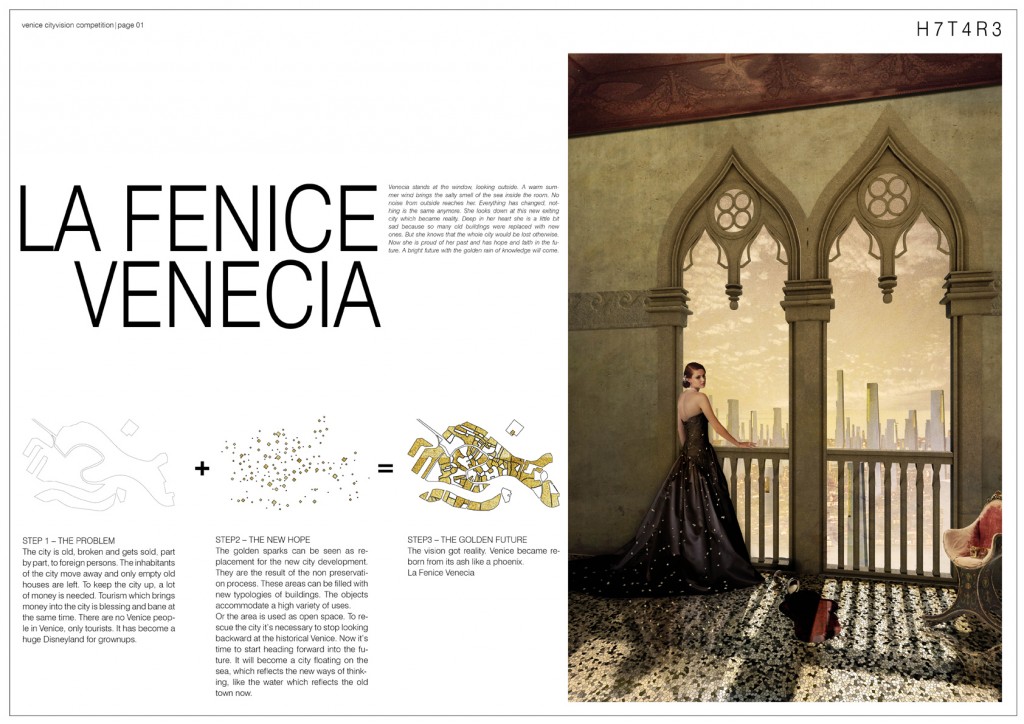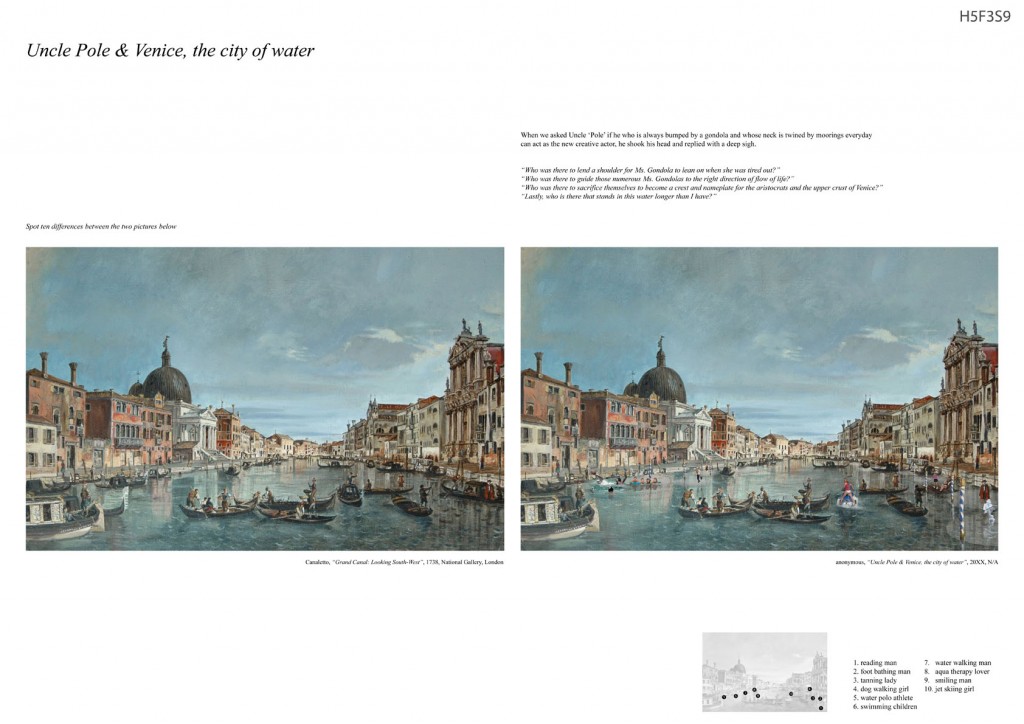Info:
Title: Venice - Code: H7F4S9Contest: Venice / 2011
By: R. Avella / A. Weisshaar / M. Braceli / M. Lugo
Views: 2822 Likes: 2
Votes:
BJARKE INGELS8 NERI OXMAN7 ELENA MANFERDINI6 MARIA LUDOVICA TRAMONTIN4 BOSTJAN VUGA45.8
Venice
“(…) sometimes different cities follow one another on the same site and under the same name, born and dying without knowing one another, without communication among themselves. At times even the names of the inhabitants remain the same, and their voices’ accent, and also the features of the faces; but the gods who live beneath names and above places have gone off without a word and outsiders have settled in their place. It is pointless to ask whether the new are better or worse than the old, since there is no connection between them, just as the old post cards do not depict Maurilia as it was, but a different city which, by chance, was called Maurilia, like this one.” Italo Calvino Cities & Memory 5, Invisible Cities
Two cities cannot be simultaneously built on the same ground, so we have become used to see old buildings disappear to make way for new architecture. Calvino’s assertion is valid when thinking of most cities in the world. But the author of the “Invisible Cities” never thought what could happen in the Venetian Lagoon the day that its high waters become uncontrollable.
Venice’s life has always been dependent on water and, someday, “La Serenissima” will finally sink. But beyond representing a problem, it sinking also offers the opportunity to imagine a different city. When compared with other cities, the death of Venice is an enviable scenario: the city will be preserved under water. Visitor will not need old postcards to nostalgically remember Venice, as a simple ticket bought on the surface will allow them to take an underwater ride through the Grand Canal or to visit Saint Mark’s Basilica and the Venetian Ghetto. Nor it will be necessary to demolish the old city to build the new one because the building surface would remain the same, just a few meters above. It seems nature is giving us a second chance.
We can imagine a modern metropolis without the fear of losing the treasures of the historic city. We will leave behind the days of Venice as a museum city and we will make it again a place where innovation and boldness are the norm.
We will fill Venice’s voids as it sinks, and the new city will become a negative of the old one. Where the Campo San Polo, Campo San Barnaba, or Piazza San Marco are today, we will build Saint Polo’s Tower, Saint Barnabas’s Tower, and Saint Mark’s Tower because the Venice of the future must be a metropolis of skyscrapers. The height will be the defense mechanism against the progressive subsidence of the city. Over time, we will lose some stories to the water, but we will always have many more left, and we can continue to grow in height.
The towers will evoke the voids of the squares on which they stand and their structure will preserve those parts of the submerged city: just like a series of encapsulated treasures. The old and the new Venice will be connected through circulation cores so life on the surface can be extended to the city’s depths. After a long day at work on the 83rd floor, we will be able to go down to the Campo Santa Margherita to drink a Spritz.
A great linear park will be build above the water over the Grand Canal, emphasizing the importance this corridor had once as a central urban hub. The park would also serve as the green lungs of the new metropolis. The canals will be reflected by a series of docks, piers and dikes that will connect the towers and the linear park while creating paths and small enclaves through the lagoon where the citizens of the new Venice can moor their ships.
Info:
Title: Venice
Time: 7 giugno 2011
Category: Venice
Views: 2822 Likes: 2
Tags: A. Weisshaar , Campo San Barnaba , Campo San Polo , Grand Canal , M. Braceli , M. Lugo , Piazza San Marco , R. Avella , St Mark's Basilica , Venetian Ghetto , Venetian Lagoon , Venice









